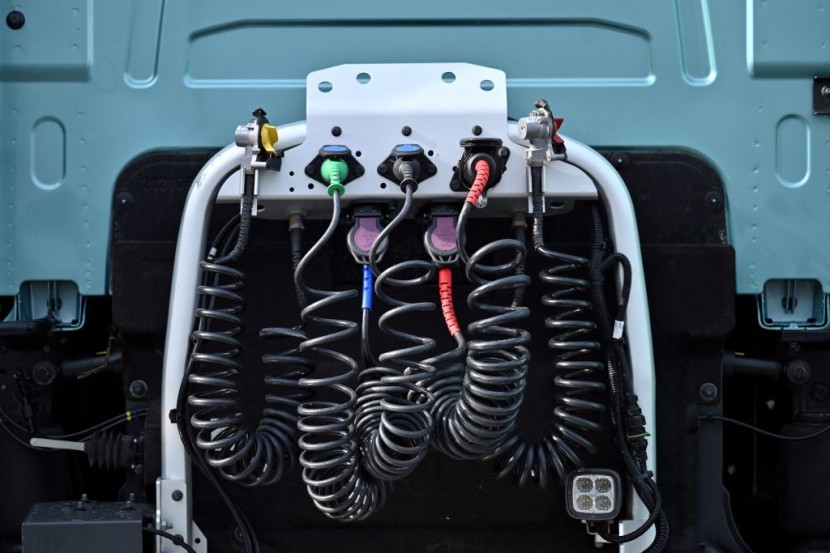
(Photo: by SERGEI GAPON/AFP via Getty Images) A detailed view of a Volvo electric truck can be seen on a truck parked in the parking lot of the Volvo Trucks headquarters in Gothenburg, Sweden, on May 4, 2023.
The ready-to-assemble car from Stockholm-based startup Luvly claims to be so compact and light that it may drastically lower the carbon emissions related to shipping.
According to Hkan Lutz, CEO and co-founder of Luvly, in addition to the innovative flat-pack shipping, Luvly is expecting that the electric car's additional advantages, such as its incredibly light frame and swappable batteries, will increase the accessibility of sustainable transportation, according to CNN.
The Luvly O
Luvly has a range of 100 kilometers (62 miles) and a top speed of 90 kilometers (55 miles) per hour, which according to Lutz is more than enough for the majority of commutes and daily trips in urban areas. It weighs less than 450 kilograms (992 pounds), which is less than one-quarter of the weight of the average modern car.
But according to Lutz, you probably won't be able to build one of these cars yourself because they must be put together by a certified auto plant before being sold to customers in order to be road legal.
IKEA has had a significant impact despite the fact that self-assembly is not necessary. According to Lutz, Luvly is attempting to provide automobiles with "good enough quality and very nice design, cheaply and efficiently for everyone," similar to what IKEA has done for furniture.
A "light urban vehicle," usually referred to as a microcar, is Luvly O.
Since the 1950s, little cars have been whizzing around metropolitan streets. The classic BMW Isetta, which only weighed 770 pounds (350 kilograms), pioneered the "bubble car" design that continues to influence contemporary light vehicle development.
Microcars have a reputation for being dangerous despite their adorable appearance. Drivers are more likely to sustain more serious injuries in collisions with other vehicles because of their low height, light frames, and small front crumple zones than in passenger cars. Additionally, they are exempt from the same crash testing requirements and safety regulations as ordinary passenger cars.
Read also: Nissan Announces Plans to Go Fully Electric in Europe by 2030
Inspired by Formula One
To solve this problem, Luvly was inspired by Formula One vehicles, which have a lightweight but sturdy chassis. The "sandwich structure" of Luvly O's frame consists of an aluminum layer that is cushioned on both sides by thin plastic foam. According to Lutz, the padding will absorb the power of a collision and safeguard the driver.
Lutz claims that the business is doing computer simulations even though crash testing is not required. Although using computers isn't cheap, crashing (actual) things is much more expensive, he claims.
Two 16-kilogram rechargeable batteries power Luvly O, and another set may be switched in to keep the vehicle running.
The Luvly O prototype is still undergoing testing, but Luvly anticipates releasing the vehicle next year for about €10,000 ($10,500).
The microcar isn't Luvly's ultimate objective, though. Other automakers will be able to construct their own branded versions using the unique light vehicle flat-pack architecture that Luvly proposes to license to them.
Related article: Ford's Billion-Dollar EV Battery Factory Suspended; Here's Why Its Construction is Halted








